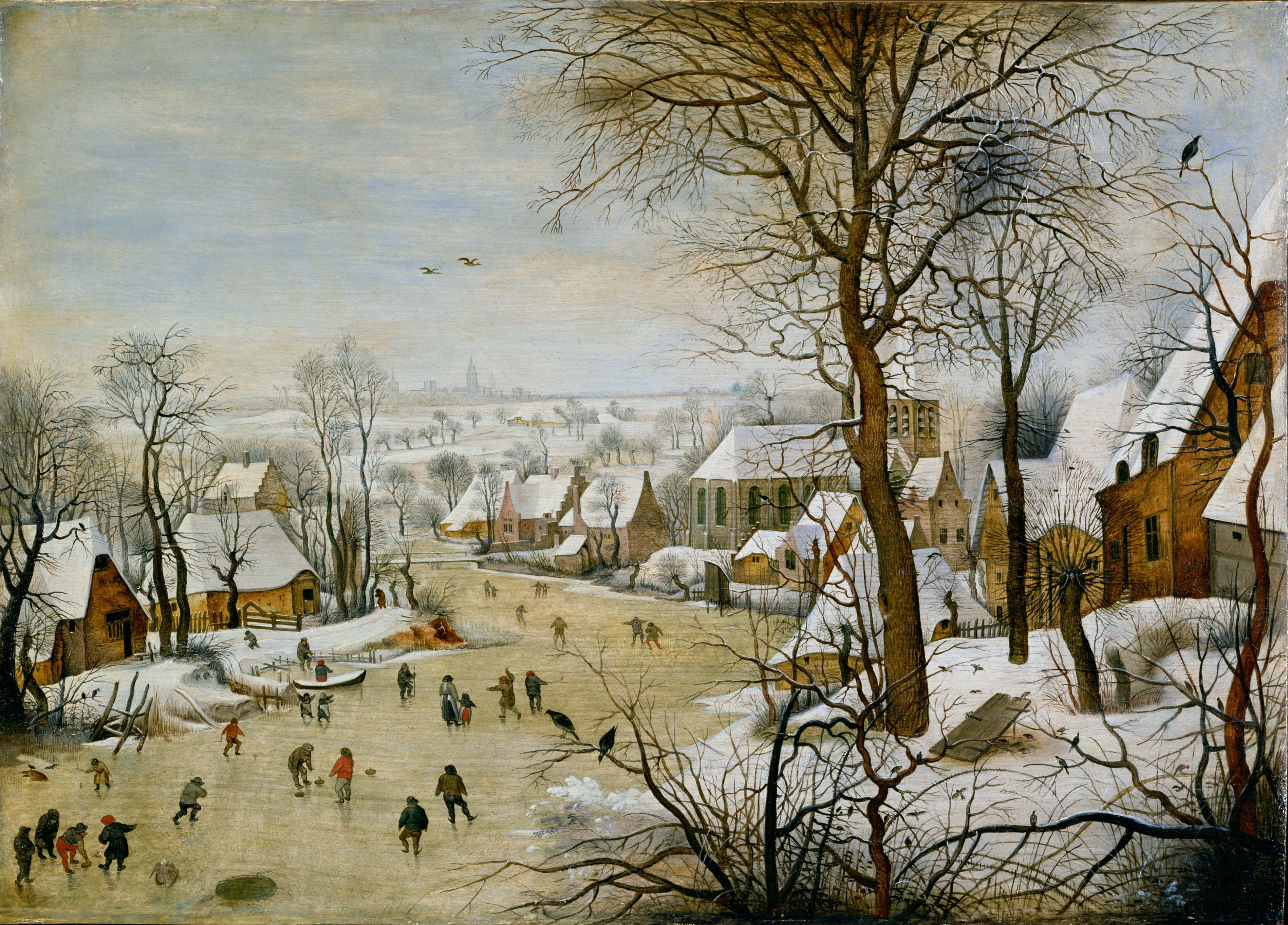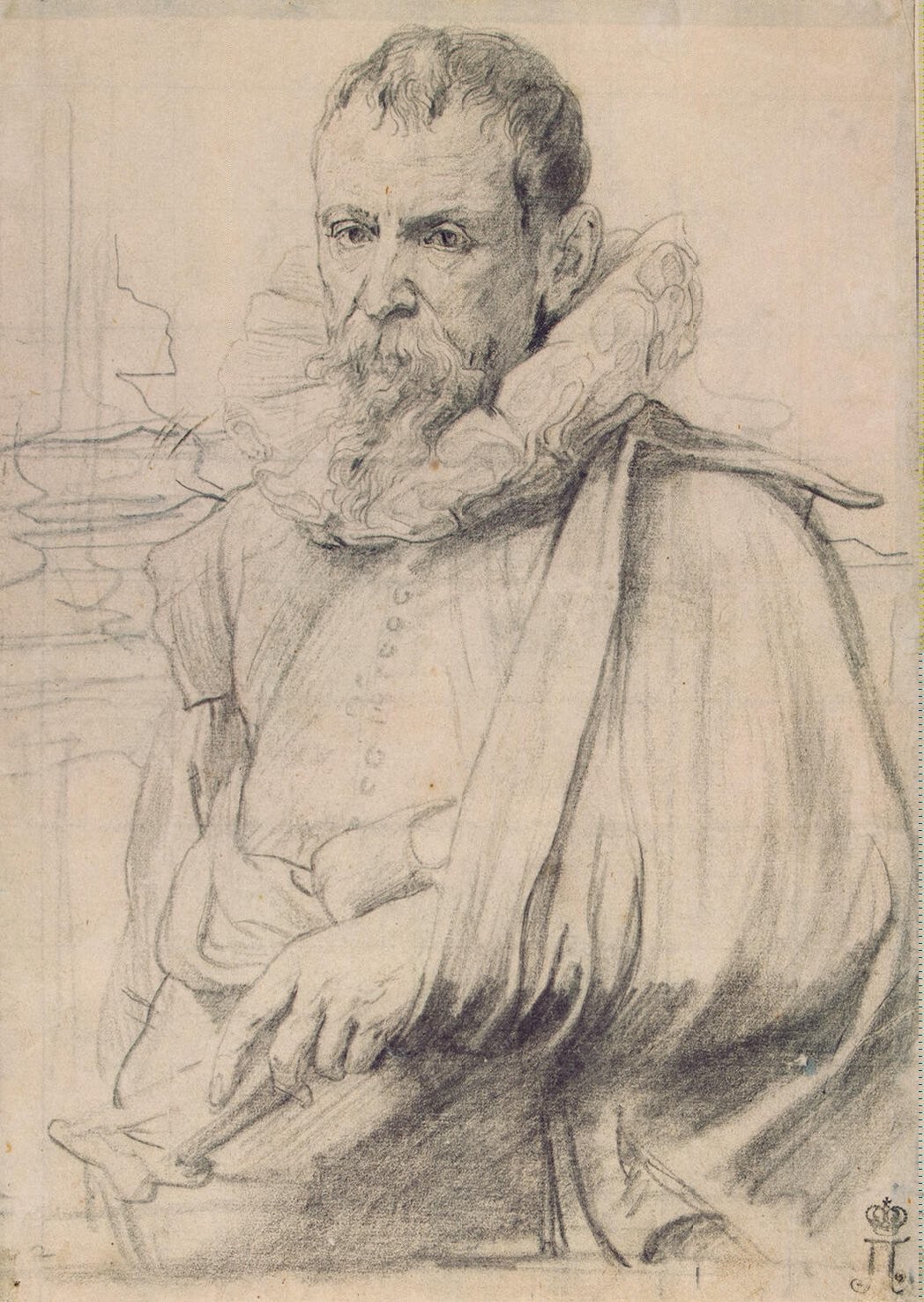This painting is one of the copies young Pieter made after his father’s work; the original (1565) is in Brusseles. It is being an extremely well known painting, often copied or imitated at the time. Considering that there was scant interest in rural life and customs in the 16th century, this easel work is part of a number of paintings with specific subjects, made by Pieter Bruegel the Elder. Today they are a prime source of information on a certain class of the society of Bruegel’s time; windows upon time, as it were, that allow us to watch the farm labour, hunting, feasts, meals as well as the dance and play of a world long gone. Winter Landscape with Bird-trap is the perfect illustration of the kind of painting that Bruegel the Elder promoted in depicting peasant life. In this case, the subject is that of leisure time in winter, in a setting that is all-too-familiar in his paintings: a village crossed by a frozen river that here stands for the more common main street. The houses have a sleepy, deserted air, as if all their inhabitants were out, frolicking in the open. The eye is attracted to the scene of the bird-trap, presented in the foreground. The trap is in fact an old door, propped up by a stick, with a string attached to it, with seeds strewn about, to tempt the birds. The string leads from the improvised trap to the small, dark window of a cottage, suggesting a human presence inside. This small spot of darkness casts a shadow on the idyllic image of joyful winter fun, illuminated by the special brilliance of snow-reflected sunlight. Suddenly, the terrible winter of the year 1565 is brought to mind, with its freezing cold and starvation and its permanent nagging worry about tomorrow and about survival, a worry that always followed the joyous moments of life, accompanying them secretly, like watchful eyes behind the dark window.




Winter Landscape with Bird-trap
oil on canvas • 56.5 x 39 cm
 Pieter Brueghel the Younger
Pieter Brueghel the Younger